Inbox and Environment News: Issue 305
March 19 - 25, 2017: Issue 305
AVGT's 2nd Ever Sustainability Day!
Sunday, April 2 at 10 AM - 3 PMCoastal Environment Centre1 Lake Park Road -Pelican Path, Narrabeen.
The Av Green Team are hosting our second ever sustainability day! Partly because last time was so fun and also because we are eager to learn more! It will be on the Sunday from 10am until about 3pm.
We have a range of awesome expert speakers and workshops covering soil and composting, permaculture, off-grid living, recycling and more! The day will be full of environmentally-friendly stalls and food.
Come along (it's free) and will be a great day of learning/eating/moving!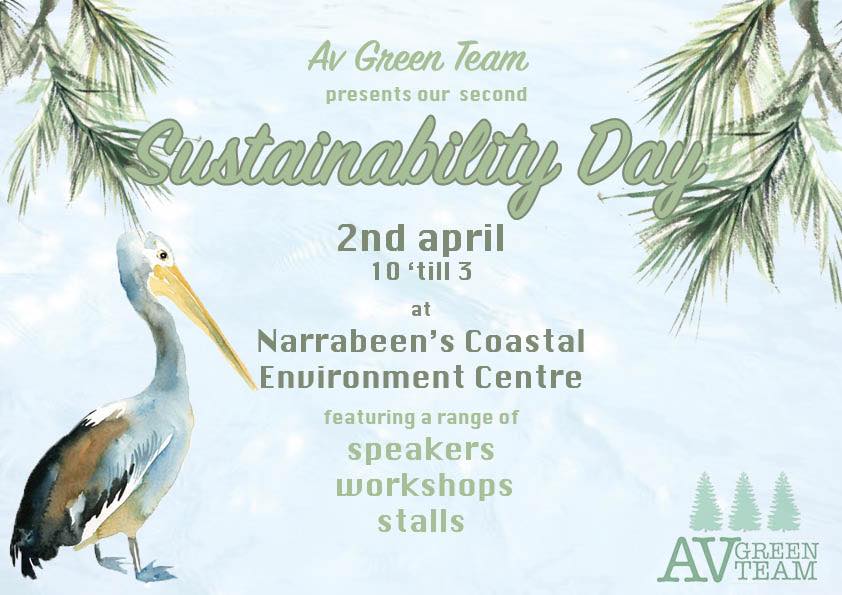

Bird Walks And Talks 2017: PNHA
Come and see and hear some of our fantastic native birds, many of which you'll never see in your garden. Join in a Sunday guided bird walk with Pittwater Natural Heritage Association. All walks start at 8am and end about 10am.
March 26, Irrawong reserve. Meet at corner Irrawong Rd and Epworth Rd.May 28, Warriewood Wetlands, meet at End of Katoa Close, north Narrabeen.August 27 Chiltern Track. Meet at gate, off northern of Chiltern Rd Ingleside.September 17 Irrawong reserve. Meet at corner Irrawong Rd and Epworth Rd.November 26 Warriewood Wetlands. Meet end of Katoa Close, north Narrabeen.
Bring binoculars if possible. Drink, hat and comfortable shoes.More information contact pnhabirdwatching@gmail.com or Ph Kerry on 0402605 721.
You don't need to book but if we know you're coming we'll watch out for you. Call if in doubt about weather as we won't go out if it's raining.


Call To Local Councils As Floodplain Management Grants Open For Applications
Media release: 16 March 2017Grant funding to assist councils in carrying out floodplain management projects to help manage flood risk open for applications today, announced the NSW Government.
The Office of Environment and Heritage (OEH) Executive Director Ian Hunter said grant funding is available to assist local government with flood studies, flood risk management studies and plans and major projects such as flood levees, gates, warning systems and house raising and purchase in high risk areas, under the 2017-18 Floodplain Management Program.
“This grant program funds important projects that assess risk and help reduce flood impacts across NSW,” Mr Hunter said.
“I encourage local councils to apply for this funding round. Applications close on 27 April 2017.
“The last funding round supported forty-four projects which shared $6.72 million.
“This grant program supports the implementation of the NSW Flood Prone Land Policy which aims to reduce the impacts of flooding and flood liability on communities,” Mr Hunter said.
Local councils, county councils and other government bodies with floodplain risk management responsibilities (refer to program guidelines) equivalent to those of local councils are eligible to apply.
Further information and application forms are available here:
More Large-Scale Solar Farms Coming To NSW
March 16, 2017: Media Release - The Hon. Anthony Roberts, Minister for Planning and HousingTwelve new renewable solar power projects, including what could be the largest in the southern hemisphere, are in NSW's planning pipeline. If approved, the proposed solar farms will generate:- more than 1000 megawatts of solar capacity, which is enough clean energy supply to power 365,000 homes across NSW
- jobs in regional NSW at Gilgandra, Hillston, Narrabri, Armidale, Coleambally, Gulgong, Walgett, Jemalong, Balranald, Nyngan and Hay.
Minister for Planning and Housing Anthony Roberts said NSW was continuing to lead with solar research and innovation, in order to reach the national renewable energy target of 23.5 per cent by 2020.
“The 1000 megawatts is on top of the 660 megawatts that will be generated by 11 other solar farms that the NSW Government has already given the green light since 2011,” Mr Roberts said.
Three large-scale solar plants in regional NSW are currently operating, at Nyngan, Moree and Broken Hill.
The Nyngan solar farm is currently the biggest operating plant in the southern hemisphere, generating 106 megawatts for 32,000 homes. It has also created 250 construction jobs and provided $330 million in investment.
The proposed Sunraysia solar farm at Balranald, in the Riverina, is expected to produce double the solar energy of Nyngan.
Solar projects across NSW
OperationalSolar farms that are up and running:Nyngan Solar FarmMoree Solar FarmBroken Hill Solar Farm
ApprovedSolar farms approved by the NSW Government since 2011:
Bogan River Solar Farm in NynganCapital Solar Farm in BungendoreManildra Solar FarmRiverina Solar Farm in YoogaliGriffith Solar Farm in YoogaliWhite Rock Solar Farm in MathesonParkes Solar FarmGoonumbla Solar Farm in Parkes
ProposedSolar farms proposed by the NSW Government in 2017:
Sunraysia Solar Farm (Balranald Council)Gilgandra Solar Farm (Gilgandra Council)Narrabri Solar Farm (Narrabri Council)Metz Solar Farm (Armidale Dumaresq Council)Hillston Solar Farm (Carrathool Council)Limondale Solar Farm (Balranald Council)Nevertire Solar Farm (Warren Council)Walgett Solar Farm (Walgett Council)Hay Solar Farm (Hay Council)Coleambally Solar Farm (Murrumbidgee Council)Jemalong Solar Farm (Forbes Shire Council)Beryl Solar Farm (Mid-Western Regional Council)More information
- more than 1000 megawatts of solar capacity, which is enough clean energy supply to power 365,000 homes across NSW
- jobs in regional NSW at Gilgandra, Hillston, Narrabri, Armidale, Coleambally, Gulgong, Walgett, Jemalong, Balranald, Nyngan and Hay.
Public Comment Open: Dolphin Mitigation Strategies For The SPF And SESSF
15 March 2017: AFMAThe Australian Fisheries Management Authority (AFMA) is seeking comments on two draft strategies with the objective of minimising interactions between commercial fishing and dolphins.
AFMA is required to minimise interactions with protected species, while the Commonwealth commercial fishing industry is required to take all reasonable steps to avoid interactions with protected species. The SPF and Gillnet Dolphin Mitigation Strategies are aimed at pursuing these objectives.
The new strategies have a broad scope and incorporate all SPF trawl methods and the entire Gillnet Fishery. They also apply a consistent set of principles for managing dolphin interactions that are consistent with bycatch principles approved by the AFMA Commission in pursuit of AFMA’s objectives.
Public comment on both draft strategies will close on 12 April 2017.
Call For Public Comment On Draft Seabird Threat Abatement Plan
15th March 2017
Public comment is now being sought on the draft Threat abatement plan for the incidental catch (or bycatch) of seabirds during oceanic longline fishing operations (Threat abatement plan for incidental catch of seabirds). The public consultation period is open until 30 June 2017.
The draft Threat abatement plan for incidental catch of seabirds provides a national strategy to guide the activities of government, industry and research organisations in abating the impact of oceanic longline fishing operations on seabirds in Commonwealth fisheries.
The consultation paper and related documents are available on theDepartment of the Environment and Energy website. Your comments on this consultation paper are welcome.
Further information about the existing Threat abatement plan 2014 for the incidental catch (or bycatch) of seabirds during oceanic longline fishing operations is available at the Threat Abatement Plan – seabirds page
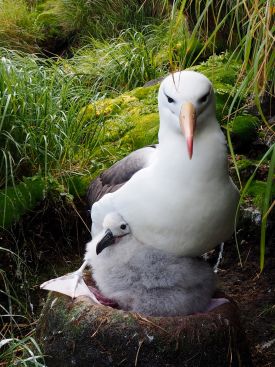
A black-browed albatross with chick, on Macquarie Island. (Photo: Kim Kliska)

Thirsty Mangroves Cause Unprecedented Dieback
March 14, 2017: James Cook UniversityA James Cook University scientist has discovered why there was an unprecedented dieback of mangroves in the Gulf of Carpentaria in early 2016 -- the plants died of thirst.
Dr Norman Duke, leader of JCU's Mangrove Research hub, headed an investigation into the massive mangrove dieback. The findings were published in the Journal of Marine and Freshwater Research.
The scientists used aerial observations and satellite mapping data of the area dating back to 1972, combined with weather and climate records.
Dr Duke said they found three factors came together to produce the unprecedented dieback of 7400 hectares of mangroves, which stretched for 1000 kilometres along the Gulf coast.
"From 2011 the coastline had experienced below-average rainfalls, and the 2015/16 drought was particularly severe. Secondly the temperatures in the area were at record levels and thirdly some mangroves were left high and dry as the sea level dropped about 20cm during a particularly strong El Nino."
Dr Duke says this was enough to produce what scientists regard as the largest recorded incident of its kind, and the worst instance of likely climate-related dieback of mangroves ever reported.
"Essentially, they died of thirst," he said.
Dr Duke said scientists now know that mangroves, like coral reefs, are vulnerable to changes in climate and extreme weather events.
He said the mangroves of Australia's Gulf region have experienced relatively little anthropogenic impact and are considered the least altered mangrove ecosystems in the world.
"So the relative dominance of climate influences in this region is of critical interest to world observers of environmental responses to climate change."
Dr Duke said the area is sparsely populated, with passing fisherman and scientists conducting unrelated work the first to notice the dieback.
"It took 4-5 months to come to the attention of mangrove tidal wetland specialists and managers. Our response to this event further involves training and equipping Indigenous rangers and local community volunteers to build local partnerships for rigorous and repeated shoreline assessments."
"We cannot afford to be caught out like this again!" said Dr Duke. "The Gulf dieback has been a wakeup call for action on shoreline monitoring. We urgently need a national shoreline monitoring program commensurate with our global standing. We have the specialists, we have the resources, and we know there is interest and concern amongst the Australian public."
To progress this further, Australia's top specialists and managers will review the situation at a dedicated workshop during next week's Australian Mangrove and Saltmarsh Network annual conference in Hobart, hosted by the University of Tasmania and CSIRO.
"The aim of Australia's specialist network is to apply intelligent, innovative and considered responses, as fully expected by the public, to improve and disseminate informed understandings of the changes taking place in high value natural resources such as Australia's coastal tidal wetland habitats," Dr Duke said.
Norman C. Duke, John M. Kovacs, Anthony D. Griffiths, Luke Preece, Duncan J. E. Hill, Penny van Oosterzee, Jock Mackenzie, Hailey S. Morning, Damien Burrows. Large-scale dieback of mangroves in Australia. Marine and Freshwater Research, 2017; DOI:10.1071/MF16322
Boaty McBoatface Submersible Prepares To Dive Into The Abyss On First Antarctic Mission
March 13, 2017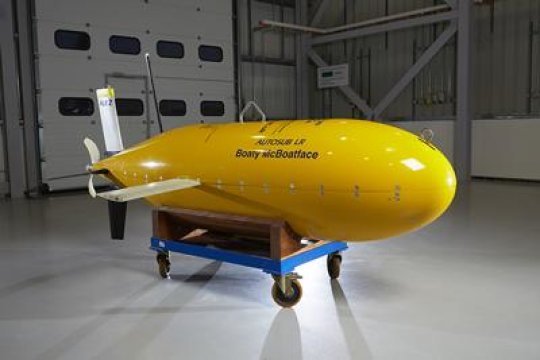
Autosub long range "Boaty McBoatface". Credit: National Oceanography Centre
Boaty McBoatface is joining ocean scientists from the University of Southampton and British Antarctic Survey (BAS) on an expedition to study some of the deepest and coldest abyssal ocean waters on earth -- known as Antarctic Bottom Water (AABW) -- and how they affect climate change.
The team of researchers, alongside engineers from the National Oceanography Centre (NOC), will assess water flow and underwater turbulence in the Orkney Passage, a region of the Southern Ocean around 3,500m deep and roughly 500 miles from the Antarctic Peninsula.
They will use one of the Autosub Long Range class of unmanned submersibles, the latest type of autonomous underwater vehicle (AUV) developed by the NOC, now known as Boaty McBoatface, following last year's campaign by the Natural Environment Research Council to name the UK's new polar research ship. While the ship will be named after famous naturalist and broadcaster Sir David Attenborough, the popular winner of the contest -- Boaty McBoatface -- lives on in the form of a unmanned submersible that is now embarking on its first Antarctic research mission.
The DynOPO (Dynamics of the Orkney Passage Outflow) expedition will travel to the Southern Ocean aboard the BAS research ship RRS James Clark Ross, departing Punta Arenas in Chile on Friday 17 March. The researchers will use a combination of specialised instruments deployed from a ship, instruments moored to the seafloor, as well as measurements made by Boaty, to measure ocean turbulence.
The submersible will travel back and forth through an abyssal current of Antarctic Bottom Water along the Orkney Passage while measuring the intensity of the turbulence. This current forms off the coast of Antarctica as cold winds off the ice sheet cool the sea surface. The resulting cold, dense water sinks and moves northwards, forming an important part of the global circulation of ocean water. The Orkney Passage is a key chokepoint that AABW has to navigate on its way from Antarctica's Weddell Sea to the Atlantic Ocean.
Current evidence suggests that changing winds over the Southern Ocean affect the speed of seafloor currents carrying AABW. The speed of these currents determines how turbulent their flow around underwater mountain ranges (submarine topography) is. Faster flow is more turbulent, and in this turbulence more heat is mixed into AABW from shallower, warmer ocean layers -- thus warming the abyssal waters on their way to the Equator, affecting global climate change.
Professor Alberto Naveira Garabato from the University of Southampton, the lead scientist of the research cruise, commented: "We know that a major driver of the abyssal ocean warming, at least in the Atlantic Ocean, is changes in winds over the Southern Ocean.
"The abyssal waters of the World Ocean sink in the Southern Ocean, and flow northward along the seafloor in submarine streams. When these streams encounter submarine topography or key chokepoints, they navigate it by squeezing through valleys and around mountains, occasionally forming submarine waterfalls -- much as a river flowing toward the sea does on the Earth's surface..
"The Orkney Passage is a key chokepoint to the flow of abyssal waters in which we expect the mechanism linking changing winds to abyssal water warming to operate. We will measure how fast the streams flow, how turbulent they are, and how they respond to changes in winds over the Southern Ocean.
"Our goal is to learn enough about these convoluted processes to represent them (for the first time) in the models that scientists use to predict how our climate will evolve over the 21st century and beyond."
BAS oceanographer Dr Povl Abrahamsen, a co-investigator of the study, said, "We have been monitoring the flow of AABW through the Orkney Passage for years. The DynOPO project will provide us with a unique, high-resolution dataset combining moored and moving instruments, which will help us get to the bottom of the complex physical processes occurring in this important region."
Professor Alberto Naveira Garabato added: "One of the most surprising features of the climate change that we are currently experiencing is that the abyssal waters of the world ocean have been warming steadily over the last few decades. Establishing the causes of this warming is important because the warming plays an important role in moderating the ongoing (and likely future) increases in atmospheric temperature and sea level around the globe."
Materials provided by University of Southampton.

NSW Water Resource Plan Consultation
Wednesday, 15 February 2017: Media Release - NSW Dept. of DPIMinister for Regional Water, Niall Blair said the NSW Government is delivering on a key Basin Plan commitment with the release of eight Water Resource Plan Status and Issues papers to take place on Friday.
“These papers set out issues related to water availability, reliability of access and longterm sustainable use, particularly through times of drought,” Mr Blair said.
“I urge all members of the community, particularly water users, to comment on the relevant Status and Issues paper in their region, and submit any additional issues that should be considered in developing a Water Resource Plan.
“It is an opportunity to look at existing planning mechanisms and water sharing rules, to identify and resolve any shortcomings, and find ways to be more efficient and productive in the NSW Murray Darling Basin.
“The plans need to work for regional communities and economies, so it is important to balance cultural and environmental needs without constraining the productive use of water that underpins the world-class irrigated agriculture sector in NSW.”
Status and Issues papers will be released on Friday for consultation in the Barwon- Darling (surface water), Murray-Lower Darling (surface water), Murrumbidgee (surface water), Namoi (surface water), Border Rivers (groundwater), Gwydir (groundwater), Lachlan (groundwater) and Macquarie-Castlereagh (groundwater).
Stakeholder Advisory Panels have been established for each surface water plan area – a vital aspect for widespread and meaningful stakeholder and community engagement.
Copies of the Status and Issues Papers, together with other supporting information will be available at www.water.nsw.gov.au
The exhibition period will be open from this Friday until Friday 31 March 2017. All written submissions, from brief emails to full technical papers, are welcome. Bushcare in Pittwater
For further information or to confirm the meeting details for below groups, please contact Council's Bushcare Officer on 9970 1367
BUSHCARE SCHEDULES
Where we work Which day What time
Avalon
Angophora Reserve 3rd Sunday 8:30 - 11:30am
Avalon Dunes 1st Sunday 8:30 - 11:30am
Avalon Golf Course 2nd Wednesday 3 - 5:30pm
Careel Creek 4th Saturday 8:30 - 11:30am
Toongari Reserve 3rd Saturday 9 - 12noon (8 - 11am in summer)
Bangalley Headland 2nd Sunday 9 to 12noon
Bayview
Winnererremy Bay 4th Sunday 9 to 12noon
Bilgola
North Bilgola Beach 3rd Monday 9 - 12noon
Algona Reserve 1st Saturday 9 - 12noon
Plateau Park 1st Friday 8:30 - 11:30am
Church Point
Browns Bay Reserve 1st Tuesday 9 - 12noon
McCarrs Creek Reserve Contact Bushcare Officer To be confirmed
Clareville
Old Wharf Reserve 3rd Saturday 8 - 11am
Elanora
Kundibah Reserve 4th Sunday 8:30 - 11:30am
Mona Vale
Mona Vale Beach Basin 1st Saturday 8 - 11am
Mona Vale Dunes 2nd Saturday+3rd Thursday 8:30 - 11:30am
Newport
Bungan Beach 4th Sunday 9 - 12noon
Crescent Reserve 3rd Sunday 9 - 12noon
North Newport Beach 4th Saturday 8:30 - 11:30am
Porter Reserve 2nd Saturday 8 - 11am
North Narrabeen
Irrawong Reserve 3rd Saturday 2 - 5pm
Palm Beach
North Palm Beach Dunes 3rd Saturday 9 - 12noon
Scotland Island
Catherine Park 2nd Sunday 10 - 12:30pm
Elizabeth Park 1st Saturday 9 - 12noon
Pathilda Reserve 3rd Saturday 9 - 12noon
Warriewood
Warriewood Wetlands 1st Sunday 8:30 - 11:30am
Whale Beach
Norma Park 1st Friday 9 - 12noon
Western Foreshores
Coopers Point, Elvina Bay 2nd Sunday 10 - 1pm
Rocky Point, Elvina Bay 1st Monday 9 - 12noon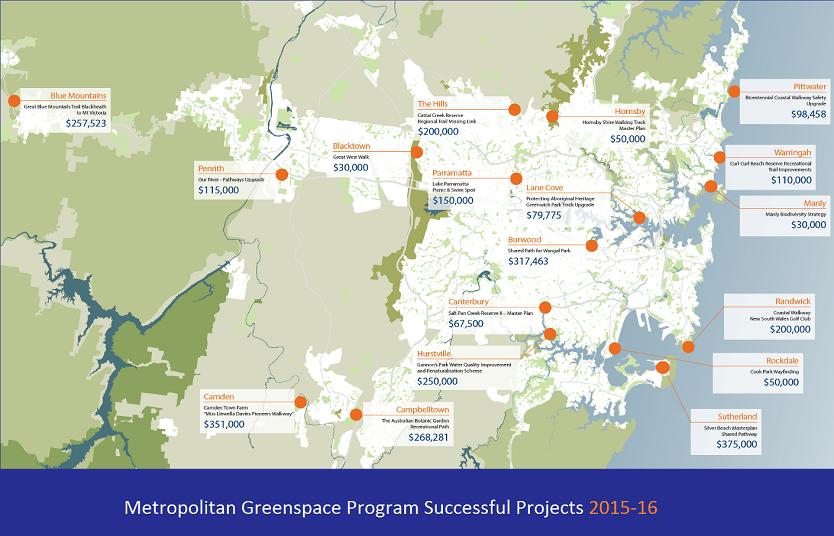
Bushcare in Pittwater
Where we work Which day What time
Avalon
Angophora Reserve 3rd Sunday 8:30 - 11:30am
Avalon Dunes 1st Sunday 8:30 - 11:30am
Avalon Golf Course 2nd Wednesday 3 - 5:30pm
Careel Creek 4th Saturday 8:30 - 11:30am
Toongari Reserve 3rd Saturday 9 - 12noon (8 - 11am in summer)
Bangalley Headland 2nd Sunday 9 to 12noon
Bayview
Winnererremy Bay 4th Sunday 9 to 12noon
Bilgola
North Bilgola Beach 3rd Monday 9 - 12noon
Algona Reserve 1st Saturday 9 - 12noon
Plateau Park 1st Friday 8:30 - 11:30am
Church Point
Browns Bay Reserve 1st Tuesday 9 - 12noon
McCarrs Creek Reserve Contact Bushcare Officer To be confirmed
Clareville
Old Wharf Reserve 3rd Saturday 8 - 11am
Elanora
Kundibah Reserve 4th Sunday 8:30 - 11:30am
Mona Vale
Mona Vale Beach Basin 1st Saturday 8 - 11am
Mona Vale Dunes 2nd Saturday+3rd Thursday 8:30 - 11:30am
Newport
Bungan Beach 4th Sunday 9 - 12noon
Crescent Reserve 3rd Sunday 9 - 12noon
North Newport Beach 4th Saturday 8:30 - 11:30am
Porter Reserve 2nd Saturday 8 - 11am
North Narrabeen
Irrawong Reserve 3rd Saturday 2 - 5pm
Palm Beach
North Palm Beach Dunes 3rd Saturday 9 - 12noon
Scotland Island
Catherine Park 2nd Sunday 10 - 12:30pm
Elizabeth Park 1st Saturday 9 - 12noon
Pathilda Reserve 3rd Saturday 9 - 12noon
Warriewood
Warriewood Wetlands 1st Sunday 8:30 - 11:30am
Whale Beach
Norma Park 1st Friday 9 - 12noon
Western Foreshores
Coopers Point, Elvina Bay 2nd Sunday 10 - 1pm
Rocky Point, Elvina Bay 1st Monday 9 - 12noon

Open Space Across Sydney
March 13, 2017: Article by NSW Department of Planning and Environment
By 2036, the population of Sydney is projected to grow by more than two million people and an extra 725,000 homes will be needed to meet this increase.
Sydney is a great place to live and visit with its iconic landmarks and natural environment, and it’s important to ensure that there is open space to enjoy for locals and tourists now and in the future. More than 90 per cent of Sydney’s residents live within a five to 10 minute walk of green space and the latest Sydney Open Space audit shows the total amount of open space across Greater Sydney has increased by nearly 40,000 hectares (from 550,784 in 2003 to 589,494 in 2014).
What is the Department of Planning and Environment doing?
Land transfers and planningThe Sydney Green Grid is a NSW Government initiative aimed at creating a network of interlinked tree-lined walkways, cycleways and open spaces across the city and create green connections from people’s homes to local centres, to workplaces and to where they spend their leisure time.
The Metropolitan Greenspace Program (MGP) is administered by theGreater Sydney Commission. The MGP supports local councils in Greater Sydney and on the Central Coast to improve open spaces, parks, bushland, natural areas, waterway corridors and tree-lined streetscapes in a network that connects our homes to centres, public transport, jobs and recreation. Since 1990, over $41 million has been allocated to more than 600 projects. Funds are awarded to councils on a matching dollar-for-dollar basis.
During the 2015/16 financial year, the Department facilitated the transfer of 101 hectares to five councils in Sydney to be used only as open space. These councils were Bankstown, Blacktown, Gosford, Hornsby, Ku-ring-gai and Warringah.
Priority Growth AreasThe development of new communities is important in the supply of new homes and employment opportunities. But it also provides opportunities for open space. The Department has included new or retained hectares of open space in its land releases and precinct plans. For example…- Draft plans for the Kellyville, Bella Vista and Showground Station precincts include 17 hectares of new parks and open space.
- Draft plans for Bayside West aim to retain the existing five hectares of open space in Arncliffe and three and 3.6 hectares of in Banksia, and proposes an extra hectare in Arncliffe.
- Draft plans for Ingleside include nearly 16 hectares of open space, including playing fields, local walking and cycling paths, and local parks.
- Sydney Olympic Park is already surrounded by 430 hectares of expansive parklands. The draft Master Plan includes nearly two hectares more open space and neighbourhood parks for people to enjoy, equivalent to nearly three football fields.
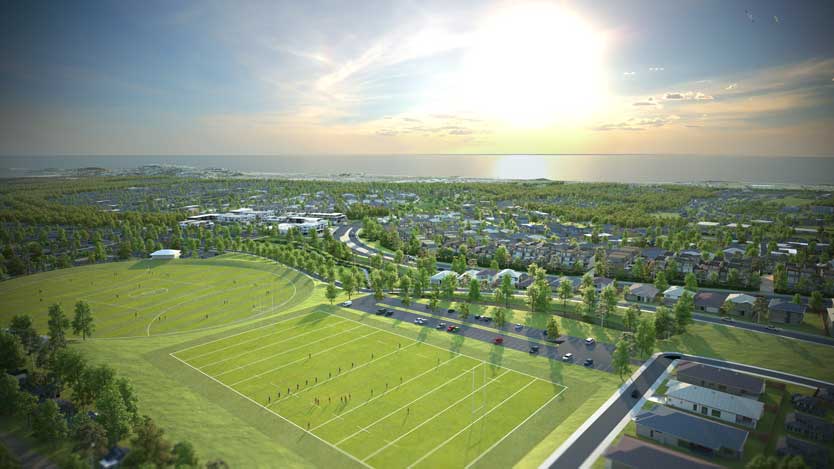
Ingleside sporting overview - artists impression
Land rezoningThe Wentworth Park rezoning included 3.9 hectares of open space and a $5 million NSW Government investment to build the new Peninsula Park at Wentworth Point, opening up the harbour foreshore to the community for the first time ever.
Amendments to planning policy for Penrith Lakes has secured waterway zone 80 hectares of waterways, 110 hectares of parklands and 118 hectares of environmental protection land.Biodiversity Certification
The North West and South West Growth Centres biodiversity certification is achieving strong conservation outcomes. This has resulted in maintaining the protection of the 2,000 hectares of existing native vegetation within the growth centres while protecting 511 hectares of high environmental value lands outside over 12 sites.Infrastructure projects
A number of development conditions are placed on projects, ensuring that impacts are avoided, minimised or offset. For example, in relation to WestConnex, and in consideration of issues raised by the community, a series of conditions have been set to provide new open public space; new cycling and pedestrian infrastructure; and strict environmental protections including:- provision of a new land bridge to connect Sydney Park and open space at St Peters interchange
- a green link incorporating new and upgraded cycling and pedestrian pathways connecting open spaces of Sydney Park, Simpson Park, Camdenville Park and St Peters interchange
- strict air quality limits for the tunnel and ventilation facilities
- establishing an Air Quality Community Consultative Committee with members of the community and local councils to help decide locations of monitoring stations
- protections for Green and Golden Bell Frogs
- a biodiversity offset strategy for the Cooks River Castlereagh Ironbark Forest.
- Draft plans for the Kellyville, Bella Vista and Showground Station precincts include 17 hectares of new parks and open space.
- Draft plans for Bayside West aim to retain the existing five hectares of open space in Arncliffe and three and 3.6 hectares of in Banksia, and proposes an extra hectare in Arncliffe.
- Draft plans for Ingleside include nearly 16 hectares of open space, including playing fields, local walking and cycling paths, and local parks.
- Sydney Olympic Park is already surrounded by 430 hectares of expansive parklands. The draft Master Plan includes nearly two hectares more open space and neighbourhood parks for people to enjoy, equivalent to nearly three football fields.

- provision of a new land bridge to connect Sydney Park and open space at St Peters interchange
- a green link incorporating new and upgraded cycling and pedestrian pathways connecting open spaces of Sydney Park, Simpson Park, Camdenville Park and St Peters interchange
- strict air quality limits for the tunnel and ventilation facilities
- establishing an Air Quality Community Consultative Committee with members of the community and local councils to help decide locations of monitoring stations
- protections for Green and Golden Bell Frogs
- a biodiversity offset strategy for the Cooks River Castlereagh Ironbark Forest.
Draft Threat Abatement Plan For The Impacts Of Marine Debris On Vertebrate Marine Species (2017)
Marine debris, particularly plastic, is harmful to marine wildlife, with impacts caused through entanglement, ingestion and contamination. This complex problem is increasing globally.
Marine debris impacts have been documented for seabirds, marine turtles, cetaceans, sharks and other Australian marine wildlife, including many species listed as threatened under the Environment Protection and Biodiversity Conservation Act 1999.
The draft Threat abatement plan for the impacts of marine debris on vertebrate marine species provides a national strategy to abate the threat posed by marine debris and guide investment and effort by the Australian Government, jurisdictions, research organisations and non-government organisations in addressing the impacts of marine debris on native species.
Public consultationThe Australian Government Department of the Environment and Energy has released the draft Threat abatement plan for the impacts of marine debris on vertebrate marine species (2017) for public comment. The public comment period closes on 13 April 2017.
The consultation paper and related documents are available on the Department of the Environment and Energy website.
Whanganui River Settlement Passes Third Reading
March 15, 2017: New Zealand Government Media ReleaseThe New Zealand House of Representatives has passed Te Awa Tupua (Whanganui River Claims Settlement) Bill through its third reading today.
“Whanganui Iwi has fought for recognition of its relationship with the Whanganui River since the 1870’s,” Mr Finlayson said. “Today brings the longest running litigation in New Zealand’s history to an end.”
The legislation will establish a new legal framework for the Whanganui River, Te Awa Tupua, which recognises the river as an indivisible and living whole from the mountains to the sea. Te Awa Tupua will have its own legal identity with all the corresponding rights, duties and liabilities of a legal person.
“The approach of granting legal personality to a river is unique,” Mr Finlayson said. “It responds to the view of the iwi of the Whanganui River which has long recognised Te Awa Tupua through its traditions, customs and practise.
“This legislation recognises the deep spiritual connection between the Whanganui Iwi and its ancestral river and creates a strong platform for the future of Whanganui River.”
Financial redress of $80 million is included in the settlement as well as an additional $1 million contribution towards establishing the legal framework for the river. The Crown will also contribute $30 million towards a contestable fund to further the health and wellbeing of the Whanganui River.
“This is an innovative settlement. The Crown is committed to working alongside Whanganui Iwi to ensure the success of this settlement for Te Awa,” Mr Finlayson said.
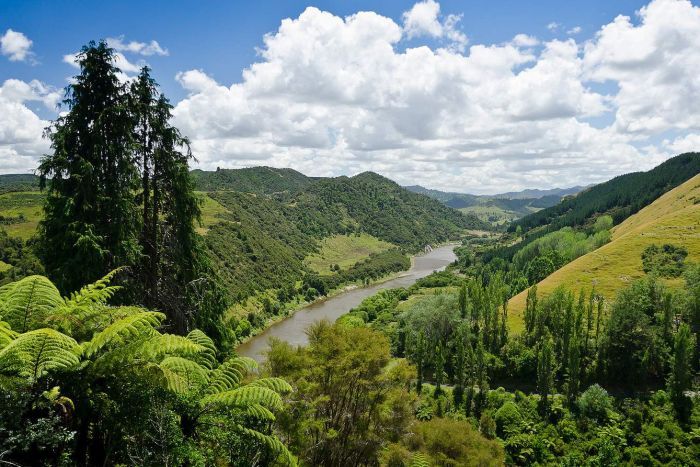
The Whanganui River - given legal person status this week. Image Courtesy Kathrin and Stefan Marks - Flickr -CC by NC 2.0

Agreement In Principle Signed With Ngāti Rangi
March 15, 2017: New Zealand Government Media Release
The Crown has signed an agreement in principle with Ngāti Rangi to settle its historical Treaty of Waitangi claims, Minister for Treaty of Waitangi Negotiations Christopher Finlayson announced today.
Ngāti Rangi has an area of interest centred around the upper Whangaehu River catchment, on the southern flank of Mount Ruapehu, including the settlements of Ohakune and Waiouru.
“Today marks an important milestone in negotiations with Ngāti Rangi and demonstrates the commitment and hard work of Ngāti Rangi leaders,” Mr Finlayson said. “This agreement provides a strong basis from which to develop a deed of settlement.”
The Agreement in Principle outlines a broad settlement package which includes provisional Crown acknowledgements of Treaty of Waitangi breaches as well as cultural, financial and commercial redress.
The total value of the financial and commercial redress outlined in the agreement is $17 million. Cultural redress focuses on the significant conservation lands, and the management of those lands, within Ngāti Rangi’s area of interest as well as redress aimed at re-establishing relationships with key Crown agencies.
A copy of the Agreement in Principle is available at: www.govt.nz/treaty-settlement-documents/.
Join The Fight Against Foxes
27 February 2017: Media Release - Greater Sydney Local Land ServicesNorthern Sydney residents are being urged to join the fight against foxes in the lead up to an autumn baiting program in March.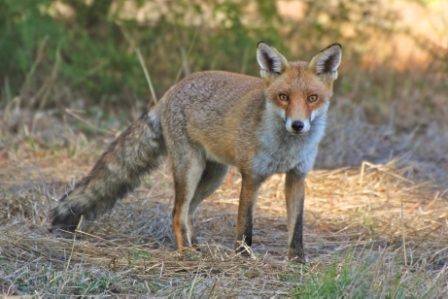
Run by Greater Sydney Local Land Services in partnership with the Sydney North Vertebrate Pest Committee, National Parks and Wildlife Services and other land management agencies, the annual program coincides with fox cubs leaving the den and adults finding a mate for the winter breeding period.
Greater Sydney Biosecurity Manager Graham Wilson said coordinated, large-scale baiting programs had proven most effective in limiting the impacts of foxes in urban areas.
“Past experience has shown foxes are more likely to take baits in autumn but the support and cooperation of local residents is vital to the program’s success.”
Mr Wilson said there were simple things residents could all do to minimise the impact of foxes.
“Foxes are attracted to food scraps and domestic pets like chickens and rabbits. You can help by ensuring compost bins are properly closed, keeping household rubbish in a secure location, feeding domestic pets inside, ensuring food is not left outside and wherever possible, keeping pets inside overnight.
“Pesticide restrictions mean baiting can’t be undertaken on the average suburban block which is why coordinated programs like this are crucial to limiting the damage foxes can cause to native wildlife, infrastructure, livestock and domestic pets,” he said.
“Keeping yards in check by tidying gardens, weeding to reduce fox harbour and housing backyard chickens in secure, fox-proof enclosures rather than free ranging will also help.”
The Northern Sydney baiting program will be in place until the end of March. It is important for residents to keep their domestic pets away from sign-posted bait sites and walk their dogs on a leash during this time.”
The baiting will take place in The Hills Shire, Northern Beaches, North Sydney, Willoughby, Ku-Ring-Gai, Mosman and Hornsby areas.
For further information contact Greater Sydney Local Land Services on 1300 795 299.
Photo: Fox courtesy James Doumtsis Invasive Animals CRC

Department Seeks Community Views On Narrabri Gas Project Proposal
20.02.2017: Departmental Media Release - Department of Planning and EnvironmentThe Department of Planning and Environment will today place on public exhibition Santos’ Narrabri Gas Project Environmental Impact Statement and is inviting the community to share its views.
Given the high level of public interest in the proposal, the Department has extended the normal exhibition period to more than 60 days. It closes on April 24.
Mike Young, Director of Resource Assessments, said the Department will be consulting broadly on the proposal and is keen to hear from all individuals and groups interested in the proposal.
“We are making every effort to make sure people have an opportunity to hear about the project and give us feedback during this assessment,” Mr Young said.
“There will be a number of opportunities to provide feedback including community information sessions and meetings with local landowners and interest groups.
“We want to hear people’s views - farmers, landholders, locals, Aboriginal groups, industry groups, councils. Everyone is welcome to make a submission and all will be read and considered in our assessment.”
Mr Young said as part of the assessment the Department will be establishing a panel of eminent scientific experts to provide independent advice on the proposal.
“These experts will be an integral part of the assessment process. Much of the information is of a scientific and technical nature and we are keen to get the best independent advice possible in assessing this project,” he said.
“In addition, we will be working with other key NSW Government agencies and seeking advice from the Commonwealth’s Independent Expert Scientific Committee.
“Any issues raised in submissions will be looked at and taken into account.”
Given the high level of public interest in the proposal, the Department has extended the normal exhibition period to more than 60 days. It closes on May 22nd.
Following the exhibition period, the Department will comprehensively assess the submissions and the EIS.
The Narrabri Gas Project proposal involves a coal seam gas field with up to 850 gas wells to be developed progressively over 20 years, and a gas processing and water treatment facilities.
Santos’ Environmental Impact Statement is available on the Department’s website, and at all major centres in the region including Narrabri, Wee Waa, Gunnedah, Coonabarabran and Coonamble
Related information: - Environmental Impact Statement for the Narrabri Gas Project
- NSW Chief Scientist 2014 Coal Seam Gas Review
- NSW Gas Plan
Narrabri Gasfield
Exhibition Start 21/02/2017Exhibition End 22/05/2017
- Environmental Impact Statement for the Narrabri Gas Project
- NSW Chief Scientist 2014 Coal Seam Gas Review
- NSW Gas Plan
Av. Green Team Back At Work
Youth-run, volunteer-based environment initiative from Avalon in Sydney. Trying to keep our area green and clean!
Keep up to date with and join in their next cleansvia their facebook page
If Victoria Can Ban CSG, NSW Can Too!
By The Wilderness SocietyCoal seam gas (CSG) threatens our water, our health and our climate. Many jurisdictions around the world are permanently banning this dangerous industry, most recently Victoria. We do not need or want risky coal seam gas in NSW. It’s clear that the industry has no social licence in our state, yet vast and critical areas—as well as human health—are still under threat from CSG across the state.
Call on the new Premier Berejiklian and the new Planning Minister Roberts to follow Victoria's lead and ban this harmful and risky industry in NSW.
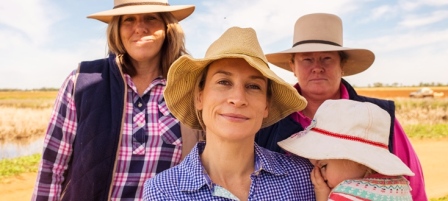

Myna Action Group
Pittwater Natural Heritage Association (PNHA)
Indian Mynas - what a pest - like flying rats. Contact us on pnhainfo@gmail.com for more information and have a look athttps://www.facebook.com/MynaProblems/
Indian Mynas are displacing our native birds. They often nest in and around shops where their food source is. I took this one down this morning in Avalon (no chicks or eggs but I disturbed the female). There were literally hundreds of tiny bits of plastic in the nest which makes you think that all this plastic would be swilling down the stormwater drains into the sea.
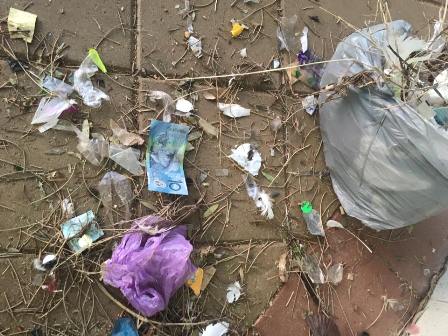

Federal Senate Inquiry: The Rehabilitation Of Mining And Resources Projects As It Relates To Commonwealth Responsibilities
On 8 February 2017, the Senate referred the following matters to the Environment and Communications References Committee for inquiry andreport by 23 August 2017:
The rehabilitation of mining and resources projects as it relates to Commonwealth responsibilities, for example under the Environment Protection and Biodiversity Conservation Act 1999 (EPBC Act), with regard to:- the cost of outstanding rehabilitation obligations of currently operating projects;
- the adequacy of existing regulatory, policy and institutional arrangements to ensure adequate and timely rehabilitation;
- the adequacy and transparency of financial mechanisms, including assurances, bonds and funds, to ensure that mining and resources projects are rehabilitated without placing a burden on public finances;
- the effectiveness of current Australian rehabilitation practices in safeguarding human health and repairing and avoiding environmental damage;
- the effectiveness of existing abandoned mines programs, with regard to repairing environmental damage and safeguarding human health;
- whether any mining or resources companies have engaged in conduct designed to avoid fulfilling their rehabilitation obligations;
- the potential social, economic and environmental impacts, including on matters of national environmental significance under the EPBC Act, of inadequate rehabilitation;
- the potential social, economic and environmental benefits of adequate rehabilitation, including job opportunities in communities affected by job losses in the mining and resources sectors;
- international examples of effective rehabilitation policy and practice;
- proposals for reform of rehabilitation of mining and resources projects; and any other related matters.
The closing date for submissions is 10 April 2017.
- the cost of outstanding rehabilitation obligations of currently operating projects;
- the adequacy of existing regulatory, policy and institutional arrangements to ensure adequate and timely rehabilitation;
- the adequacy and transparency of financial mechanisms, including assurances, bonds and funds, to ensure that mining and resources projects are rehabilitated without placing a burden on public finances;
- the effectiveness of current Australian rehabilitation practices in safeguarding human health and repairing and avoiding environmental damage;
- the effectiveness of existing abandoned mines programs, with regard to repairing environmental damage and safeguarding human health;
- whether any mining or resources companies have engaged in conduct designed to avoid fulfilling their rehabilitation obligations;
- the potential social, economic and environmental impacts, including on matters of national environmental significance under the EPBC Act, of inadequate rehabilitation;
- the potential social, economic and environmental benefits of adequate rehabilitation, including job opportunities in communities affected by job losses in the mining and resources sectors;
- international examples of effective rehabilitation policy and practice;
- proposals for reform of rehabilitation of mining and resources projects; and any other related matters.
Draft NSW Marine Estate Threat And Risk Assessment Report Released
January 2017: Media Release - NSW DPIThe Marine Estate Management Authority has released the draft statewide Threat and Risk Assessment (TARA) Report for the NSW marine estate.Authority Chair Dr Wendy Craik said the draft report summarises the first statewide evidence-based assessment of the threats to the social and economic benefits of the marine estate and the environmental assets that support them.
“The draft TARA report has been developed based on the best available scientific evidence and advice from experts, stakeholders and the community,” she said.
Dr Craik said the NSW community had helped identify the social and economic benefits our estuaries and coastline provide, and the importance of the environmental assets that underpin them, during a statewide survey in 2014.
“These benefits include recreational pursuits such as swimming or surfing at the beach, boating, fishing, and commercial and tourism opportunities such as shipping, commercial and charter fishing, SCUBA diving and others,” she said.
“Community members and stakeholders now have an opportunity to provide feedback on the draft report, which highlights potential threats to these benefits and the marine estate’s environmental assets.”
Dr Craik said short videos and an interactive tool are being provided to facilitate community feedback and discussion by presenting the report results in a user-friendly way.
“We are committed to managing our marine estate for the benefit of the community, and this report and the process is designed to support and encourage participation,” she said.
The final report will inform the ongoing management of the NSW marine estate through the drafting of a new 10-year Marine Estate Management Strategy.
It will also be considered in the creation of new management plans, starting with the Solitary Islands and Batemans Marine Parks.
The draft TARA report includes revised findings for the Hawkesbury Shelf marine bioregion, now called the ‘Central Region’.
The draft report delivers on a key commitment of the NSW Government, to provide evidence-based management of the NSW marine estate, and is a requirement of the Marine Estate Management Act 2014.
More informationThe draft report, background reports and other supporting material are available at NSW Marine Estate Authority.
The public comment period closes on Friday, 31 March 2017. Key marine estate stakeholders will be invited to participate in a series of workshops to be held along the coast in February and March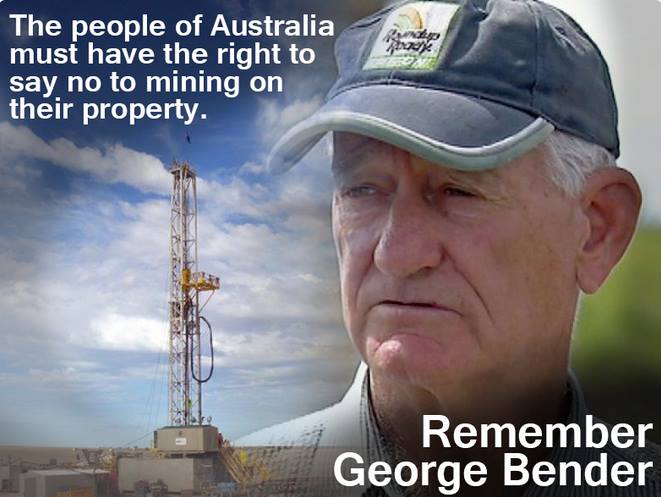
Wildlife Carers and Organisations in Pittwater:
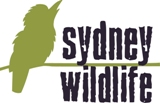 Sydney Wildlife rescues, rehabilitates and releases sick, injured and orphaned native wildlife. From penguins, to possums and parrots, native wildlife of all descriptions passes through the caring hands of Sydney Wildlife rescuers and carers on a daily basis. We provide a genuine 24 hour, 7 day per week emergency advice, rescue and care service.
Sydney Wildlife rescues, rehabilitates and releases sick, injured and orphaned native wildlife. From penguins, to possums and parrots, native wildlife of all descriptions passes through the caring hands of Sydney Wildlife rescuers and carers on a daily basis. We provide a genuine 24 hour, 7 day per week emergency advice, rescue and care service.
As well as caring for sick, injured and orphaned native wildlife, Sydney Wildlife is also involved in educating the community about native wildlife and its habitat. We provide educational talks to a wide range of groups and audiences including kindergartens, scouts, guides, a wide range of special interest groups and retirement villages. Talks are tailored to meet the needs and requirements of each group.
Found an injured native animal? We're here to help.
Keep the animal contained, warm, quiet and undisturbed. Do not offer any food or water.
Call Sydney Wildlife immediately on 9413 4300, or take the animal to your nearest vet. Generally there is no charge.
Find out more at: www.sydneywildlife.org.au
 Southern Cross Wildlife Care was launched over 6 years ago. It is the brainchild of Dr Howard Ralph, the founder and chief veterinarian. SCWC was established solely for the purpose of treating injured, sick and orphaned wildlife. No wild creature in need that passes through our doors is ever rejected.
Southern Cross Wildlife Care was launched over 6 years ago. It is the brainchild of Dr Howard Ralph, the founder and chief veterinarian. SCWC was established solely for the purpose of treating injured, sick and orphaned wildlife. No wild creature in need that passes through our doors is ever rejected.
People can assist SCWC by volunteering their skills ie: veterinary; medical; experienced wildlife carers; fundraising; "IT" skills; media; admin; website etc. We are always having to address the issue of finances as we are a non commercial veterinary service for wildlife in need, who obviously don't have cheque books in their pouches. It is a constant concern and struggle of ours when we are pre-occupied with the care and treatment of the escalating amount of wildlife that we have to deal with. Just becoming a member of SCWC for $45 a year would be a great help. Regular monthly donations however small, would be a wonderful gift and we could plan ahead knowing that we had x amount of funds that we could count on. Our small team of volunteers are all unpaid even our amazing vet Howard, so all funds raised go directly towards our precious wildlife. SCWC is TAX DEDUCTIBLE.
Find out more at: southerncrosswildlifecare.org.au/wp/

Wildlife Carers and Organisations in Pittwater:
 Sydney Wildlife rescues, rehabilitates and releases sick, injured and orphaned native wildlife. From penguins, to possums and parrots, native wildlife of all descriptions passes through the caring hands of Sydney Wildlife rescuers and carers on a daily basis. We provide a genuine 24 hour, 7 day per week emergency advice, rescue and care service.
Sydney Wildlife rescues, rehabilitates and releases sick, injured and orphaned native wildlife. From penguins, to possums and parrots, native wildlife of all descriptions passes through the caring hands of Sydney Wildlife rescuers and carers on a daily basis. We provide a genuine 24 hour, 7 day per week emergency advice, rescue and care service.
As well as caring for sick, injured and orphaned native wildlife, Sydney Wildlife is also involved in educating the community about native wildlife and its habitat. We provide educational talks to a wide range of groups and audiences including kindergartens, scouts, guides, a wide range of special interest groups and retirement villages. Talks are tailored to meet the needs and requirements of each group.
Found an injured native animal? We're here to help.
Keep the animal contained, warm, quiet and undisturbed. Do not offer any food or water.
Call Sydney Wildlife immediately on 9413 4300, or take the animal to your nearest vet. Generally there is no charge.
Find out more at: www.sydneywildlife.org.au
 Southern Cross Wildlife Care was launched over 6 years ago. It is the brainchild of Dr Howard Ralph, the founder and chief veterinarian. SCWC was established solely for the purpose of treating injured, sick and orphaned wildlife. No wild creature in need that passes through our doors is ever rejected.
Southern Cross Wildlife Care was launched over 6 years ago. It is the brainchild of Dr Howard Ralph, the founder and chief veterinarian. SCWC was established solely for the purpose of treating injured, sick and orphaned wildlife. No wild creature in need that passes through our doors is ever rejected.
People can assist SCWC by volunteering their skills ie: veterinary; medical; experienced wildlife carers; fundraising; "IT" skills; media; admin; website etc. We are always having to address the issue of finances as we are a non commercial veterinary service for wildlife in need, who obviously don't have cheque books in their pouches. It is a constant concern and struggle of ours when we are pre-occupied with the care and treatment of the escalating amount of wildlife that we have to deal with. Just becoming a member of SCWC for $45 a year would be a great help. Regular monthly donations however small, would be a wonderful gift and we could plan ahead knowing that we had x amount of funds that we could count on. Our small team of volunteers are all unpaid even our amazing vet Howard, so all funds raised go directly towards our precious wildlife. SCWC is TAX DEDUCTIBLE.
Find out more at: southerncrosswildlifecare.org.au/wp/
Corroboree Frog Habitat Trial Is A Hop In The Right Direction
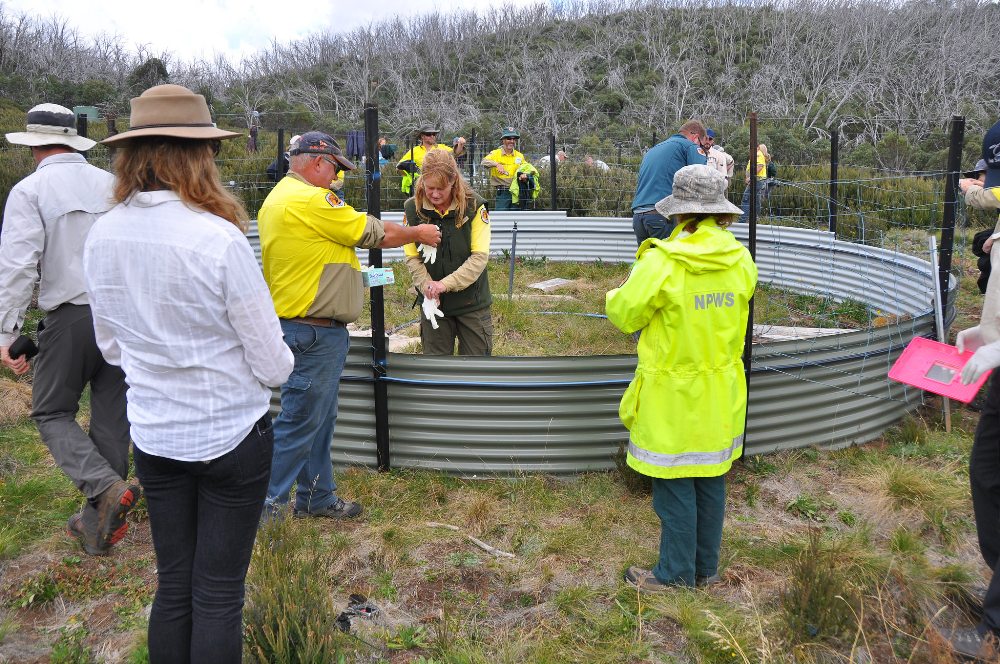
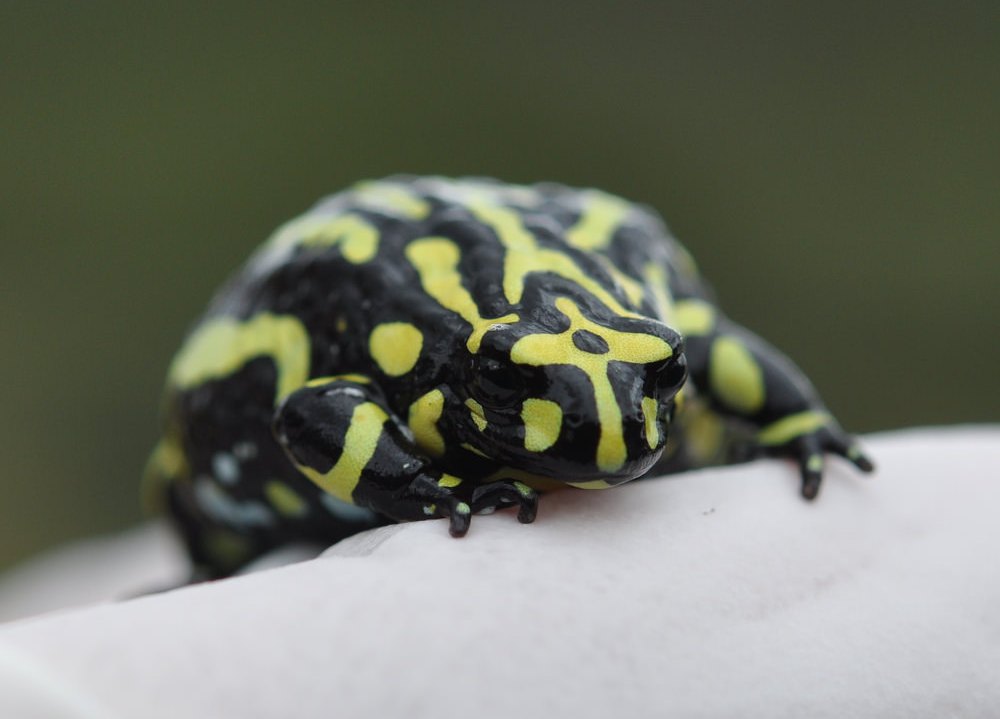
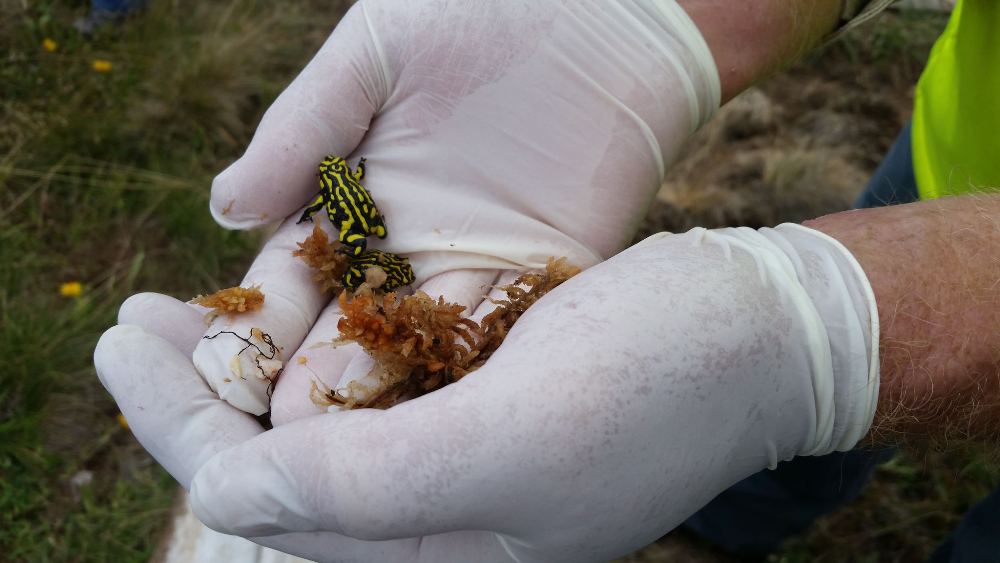
Hydrogen On Demand
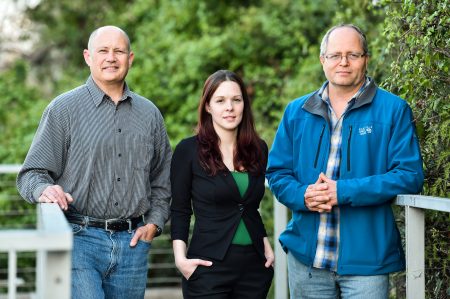
Securing Australia's Energy Future With Snowy Mountains 2.0
Older Women Taking Statins Face Higher Risk Of Diabetes
Veterans To Benefit From Improved Mental Health Support
Grants Support The Innovative Ideas Of Small And Medium Businesses
Round Three Of The Bridges Renewal Programme Now Open
Gina Field Named 2017 NSW Business Woman Of The Year
Child Protection Crisis Worsening
Changes Recommended For Campbells Stores In The Rocks
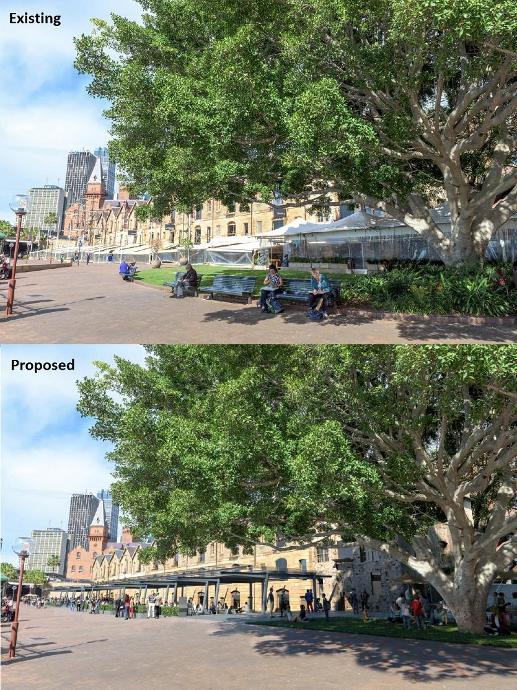
Recognising Australia's East Coast Gas Crisis
Menin Gate Lions To Go On Display In Ieper, Belgium
Star Discovered Whipping Around A Black Hole Twice An Hour

Disclaimer: These articles are not intended to provide medical advice, diagnosis or treatment. Views expressed here do not necessarily reflect those of Pittwater Online News or its staff.